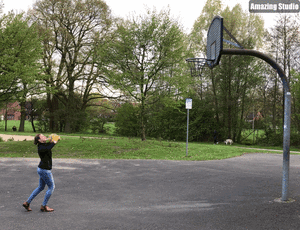|
|
| Zeile 70: |
Zeile 70: |
| \text{II}\quad & 3x & + & 11y & = & 11\\ | | \text{II}\quad & 3x & + & 11y & = & 11\\ |
| \end{array}</math> | | \end{array}</math> |
|
| |
| {{Box
| |
| |1=erweiterte Zinsformel für den Zinseszins
| |
| |2=Die Zinsformel kann auch für die Berechnung des Zinseszins genutzt werden:
| |
| <math> K=100</math> € werden mit einem Zinssatz <math> p=5</math> % vier Jahre lang gespart.
| |
| <math>K_1</math> bezeichnet das Kapital nach einem Jahr, <math>K_2</math> nach zwei Jahren und so weiter. Damit ist <math>K_n</math> das Kapital nach <math>n</math> Jahren.
| |
|
| |
| {{Lösung versteckt|1=
| |
|
| |
| Für das erste Jahr lässt sich das Kapital so berechnen:
| |
| <math> K\cdot(1 + 1\cdot \frac{z}{100}) = K_1</math>
| |
|
| |
| Für <math>K = 100</math> € folgt dann <math>100 </math>€<math>\cdot(1 + 1\cdot \frac{z}{100}) = 105</math> €.
| |
|
| |
| Für das zweite Jahr lässt sich das Kapital so berechnen:
| |
| <math> K_1\cdot(1 + 1\cdot \frac{z}{100}) = K_2</math>
| |
| <math> = 105</math> € <math>\cdot(1 + 1\cdot \frac{z}{100}) = 110{,}25</math> €. |2=Bisherige Rechenweise |3=Einklappen}}
| |
|
| |
| {{Lösung versteckt|1= Das kann auch in einem Rechenschritt vereinfacht werden:
| |
|
| |
| Jetz setzen wir für das Kapital nach einem Jahr <math> K_1</math> in die Formel für das erste Jahr <math> K\cdot(1 + 1\cdot \frac{z}{100}) = K_1</math> ein:
| |
| <math> (K_1)\cdot(1 + 1\cdot \frac{z}{100}) = (K\cdot(1 + 1\cdot \frac{z}{100}))\cdot(1 + 1\cdot \frac{z}{100}) = K_2</math>
| |
|
| |
| Für das dritte Jahr ergibt sich dann
| |
|
| |
| <math>K\cdot(1 + 1\cdot \frac{z}{100})\cdot(1 + 1\cdot \frac{z}{100})\cdot(1 + 1\cdot \frac{z}{100}) = K_3</math>
| |
|
| |
| Du kannst für jedes weitere Jahr einmal die Formel mit <math>(1 + 1\cdot \frac{z}{100})</math> multiplizieren.|2=Vereinfachen |3=Einklappen}}
| |
|
| |
| {{Lösung versteckt|1= Noch kürzer lässt sich das als Potenz schreiben:
| |
| <math>K\cdot(1 + 1\cdot \frac{z}{100})\cdot(1 + 1\cdot \frac{z}{100})= K\cdot(1 + 1\cdot \frac{z}{100})^2= K_2</math>
| |
|
| |
| oder für das dritte Jahr
| |
|
| |
| <math>K\cdot(1 + 1\cdot \frac{z}{100})\cdot(1 + 1\cdot \frac{z}{100})\cdot(1 + 1\cdot \frac{z}{100})= K\cdot(1 + 1\cdot \frac{z}{100})^3= K_3</math>.
| |
|
| |
| Für ein beliebiges Jahr, das Jahr Nummer <math>n</math> wird dann <math>K</math> insgesamt <math>n</math>-mal mit dem Faktor <math>1 + 1\cdot \frac{z}{100}</math> multipliziert:
| |
| <math>K\cdot(1 + 1\cdot \frac{z}{100})\cdot</math> ... <math>n</math>- mal ...<math>\cdot (1 + 1\cdot \frac{z}{100})= K\cdot(1 + 1\cdot \frac{z}{100})^n= K_n</math>.|2=Die erweiterte Zinsformel |3=Einklappen}}
| |
|
| |
|
| |
| |3=Merksatz}}
| |
Version vom 7. Dezember 2020, 10:41 Uhr
Spielwiese
Schreiben im Wiki
"Neben normalem Text kann man auch kursiven oder fett gedruckten Text schreiben. Ebenso ist eine Kombination aus beidem möglich. Grüner Text ist schon etwas schwieriger und funktioniert über die Quelltextbearbeitung."
Vorlagen
Ganz einfach per Mausklick aktivierbar
Aufgabe 1: Ableitung
Bestimme die Ableitung von

.
Übung 1: Ableitung
Bestimme die Ableitung von

und

.
Merke
Der Merksatz steht auf S. 43 im Schulbuch.
Dateien
Interaktive Applets
Mehrzeilige Formeln etc.










